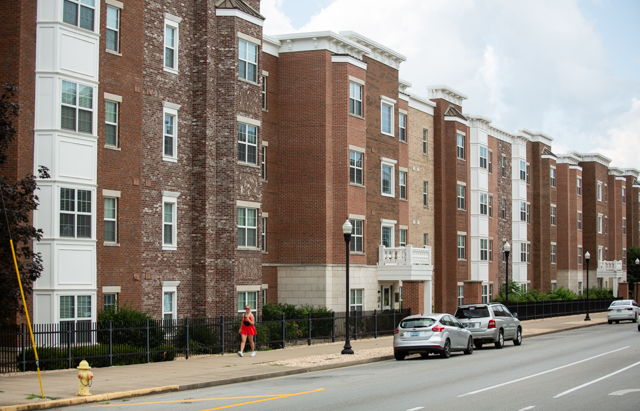Civil Air Patrol looks to increase its membership
Published 12:00 am Sunday, October 12, 2008
Dressed in full battle dress and standing tall, Zane Nevins stepped sharply toward Rep. Jim DeCesare, R-Bowling Green, to receive his General Billy Mitchell Award.
Nevins, 14, of Morgantown is a member of the Bowling Green Composite Squadron of the Civil Air Patrol, Kentucky Wing, and the award he received Tuesday at the Bowling Green-Warren County Regional Airport recognizes Nevins’ efforts during the two years he has been a cadet in the CAP.
Trending
To earn the distinction, Nevins had to pass a 100-question comprehensive leadership exam and a comprehensive aerospace exam with a score of at least 80 percent, pass a Cadet Physical Fitness Test, complete a physically demanding encampment and demonstrate leadership ability.
“This is definitely one of the hardest things I’ve ever done in the Civil Air Patrol,” said Nevins, a freshman at Butler County High School who eventually wants to join the U.S. Air Force and become a pilot.
When Nevins does enter the Air Force, his Mitchell Award will qualify him for advancement to the rank of 2nd Lieutenant.
“Zane has been one of our stars,” said Lt. Col. Michael Bryant, commander of the Bowling Green squadron. “He has made just about every one of his achievements right on time.”
Bryant hopes to take the example of Nevins’ advancement and use it to shape and add recruits to a squadron that is involved in numerous activities under the radar.
The Civil Air Patrol is the civilian auxiliary of the Air Force, a nonprofit organization that performs three principal missions: emergency services, aerospace education and cadet programs for youth.
Trending
Consisting of about 64,000 members nationwide and with 17 squadrons operating in Kentucky, CAP’s membership is divided into cadets between 12 and 21 years of age and senior members, commonly referred to as officers, from age 18 up.
Cadets can choose to join the officer class at age 18.
Recently, Bryant’s squadron was part of a ground search operation for a missing person in Metropolis, Ill.
The Bowling Green squadron, which was organized about 35 years ago, has 18 members, all recruited from numerous western Kentucky counties and a handful from Tennessee, north of Nashville.
Bryant said he has a goal of a 30-member squadron.
“We want people who want to be here, who prefer to give back to their community,” Bryant said. “We do it with a little bit of flair by flying.”
When an emergency such as a natural disaster strikes in an area, CAP cadets and officers can be dispatched to the scene to engage in recovery efforts or ground and air searches.
After the Sept. 11, 2001, terrorist attacks that destroyed the World Trade Center in New York, the first non-military aircraft to fly in airspace over the site was a CAP plane.
“After Hurricane Katrina, the CAP flew many hours of photography missions up and down the Gulf Coast, taking photos and giving people an opportunity to see what was going on,” Bryant said.
The CAP’s Aerospace Education Program consists of educational activities for members, who learn about flight physics, history, technology and applications.
Cadets must go through the AEP, and a cadet’s progression through the squadron depends on passing a series of tests related to aerospace.
Cadets build their knowledge in the aerospace program through squadron meetings, field trips, encampments, building models and flights.
Bryant said the powered flight encampment is a crucial part of a cadet’s education. Consisting of several hours of ground instruction and flight time, the encampment is one of the more physically demanding aspects of a cadet’s time in the CAP.
“It gets harder as you go along,” Nevins said. “You get up at 4 in the morning … run a mile, do all our exercises and run a mile back.”
The patrol also conducts outreach through its External Aerospace Education program, visiting schools and providing educational resources for teachers.
Nevins’ Mitchell Award is a milestone that very few cadets achieve – according to the online CAP Knowledge Base, only 15 percent of cadets in the patrol will earn the honor.
After the Mitchell Award, cadets have the opportunity to achieve additional milestones based on passing a number of leadership and proficiency tests and mastering certain skills. Those additional awards include the Amelia Earhart Award, the Gen. Ira C. Eaker Award and the Gen. Carl A. Spaatz Award, which is the highest cadet award.
Bryant said a group in Elizabethtown had recently started holding meetings and hopes that another group in Owensboro will start.
Bryant will have the help of other CAP officers, military recruiters and families of officers and cadets in his efforts to recruit new members for the Bowling Green squadron.
“Bowling Green is somewhat of a transient community; people work here for a few years and move on,” Bryant said, explaining the challenge involved in bolstering the local squadron.
The skills a squadron member builds and the efforts members are involved in are used as selling points for recruiting cadets, as well as the career-building options a CAP cadet has upon joining the Air Force, becoming an officer in the patrol or entering college.
“For me, this was definitely something to get into, it’s the best discipline practice you can possibly get,” Nevins said. “There are a lot of difficult things to do along the way, but at the end you can look back on what you have to do to get there and laugh.”
— For more information about the Civil Air Patrol Kentucky Wing, visit www.kywgcap.org.






